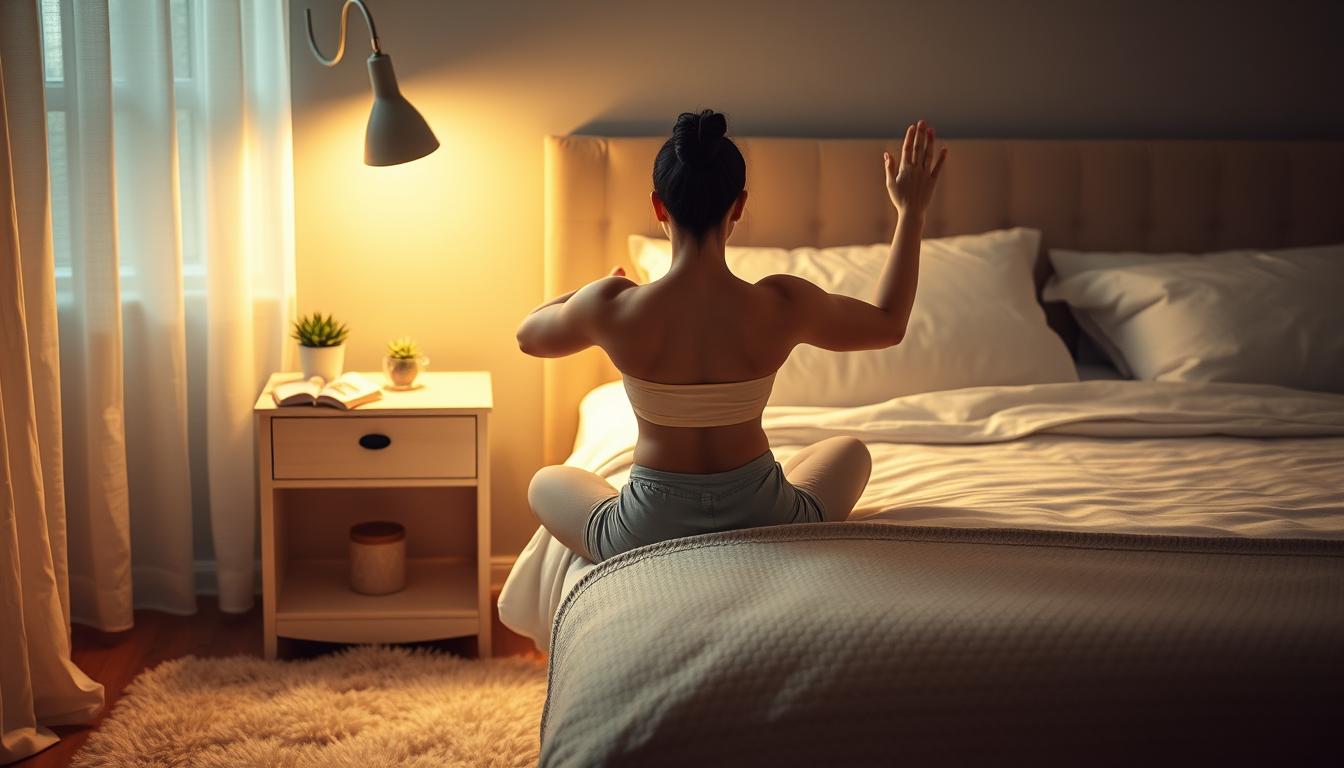10 Healthy Sleep Hygiene Tips
Consistent nighttime routines play a vital role in maintaining physical energy and mental clarity. Sleep hygiene describes the practices that help people fall asleep faster and stay rested longer. These habits influence everything from mood to immune function, making them essential for daily performance.
Most adults require at least seven hours of nightly rest, according to health experts. Children and teens often need even more—up to eleven hours—to support growth and development. Without proper routines, many struggle to meet these targets, leading to fatigue and reduced productivity.
Your daytime choices directly affect how well you rest after dark. Caffeine intake, screen time, and irregular schedules can disrupt natural sleep cycles. Small adjustments to evening rituals often create meaningful improvements in quality and duration.
This guide outlines practical strategies to help you establish sustainable patterns. You’ll learn how environmental factors and pre-bedtime activities contribute to deeper, more refreshing rest. We’ll also address common obstacles like stress and busy lifestyles.
Key Takeaways
- Nightly habits significantly impact energy levels and overall health
- Adults need seven or more hours of rest for optimal functioning
- Daily routines influence sleep patterns more than most realize
- Environmental adjustments can enhance rest quality
- Consistent practices help overcome common sleep challenges
Understanding the Basics of Sleep Hygiene
Quality rest acts as the body’s nightly repair system, mending tissues and sharpening cognitive functions. When we skimp on rest, we disrupt critical processes like muscle recovery and memory consolidation. Over time, this deficit can trigger inflammation and weaken immune defenses.
The impact on mental and physical health
Chronic lack of proper rest doubles the risk of heart issues and triples susceptibility to metabolic disorders. Research shows poor sleep quality correlates strongly with increased anxiety levels and depressive episodes. Even mild sleep deprivation impairs decision-making skills similar to alcohol intoxication.
Daily habits that influence sleep quality
Your morning coffee and afternoon snack choices ripple into nighttime rest patterns. Consider these daytime factors:
- Sunlight exposure before noon helps regulate circadian rhythms
- Heavy meals within three hours of bedtime disrupt digestion
- Even mild dehydration alters body temperature regulation
Stress management techniques like brief meditation sessions prove more effective than late-night screen scrolling. Small hygiene adjustments—like consistent meal times—create compounding benefits for nightly recovery.
Why Consistency Matters: Establishing a Regular Sleep Schedule

Your body thrives on predictability, especially when it comes to rest. The circadian rhythm—a 24-hour biological clock—governs energy peaks and dips. Aligning your schedule with this natural cycle strengthens its timing precision, like fine-tuning a musical instrument.
Syncing your body’s internal clock
Natural light exposure regulates your internal clock more effectively than any alarm. Morning sunlight sends wake-up signals, while evening darkness triggers melatonin production. Consistent bedtimes train your brain to release sleep hormones at the right time, making it easier to fall asleep within 20 minutes.
Setting a sleep-friendly routine
Calculate your ideal bedtime by counting back 7-8 hours from your fixed wake-up time. Weekend deviations shouldn’t exceed one hour—think of it as avoiding “social jet lag.” Three practical strategies:
- Use gradual 15-minute adjustments for schedule changes
- Create pre-bed cues like reading or light stretching
- Track patterns with a simple sleep diary
Night shift workers can benefit from blackout curtains and strict light management. Remember: routine beats perfection. Even 80% consistency delivers noticeable improvements in alertness and mood.
Implementing 10 Healthy Sleep Hygiene Tips
Your daily patterns hold surprising power over nighttime recovery. Effective rest strategies work like interconnected gears—each habit supporting others to create lasting change. Hygiene practices extend beyond bedtime, influencing how quickly you drift off and how refreshed you feel at dawn.
- Morning sunlight exposure strengthens circadian rhythms
- Strategic meal timing prevents digestive disruptions
- Wind-down rituals signal your brain to release sleep hormones
These tips address multiple biological systems simultaneously. Light exposure regulates melatonin production, while consistent routines reduce decision fatigue. Even minor adjustments—like limiting evening screens—create ripple effects across your rest cycle.
Most improvements require simple habit shifts rather than drastic overhauls. Start with one or two changes and track progress for three weeks. Research shows gradual implementation leads to higher success rates than attempting multiple changes at once.
Remember: lasting transformation comes from consistency, not perfection. Your body adapts best to small, steady improvements. As we explore specific strategies in later sections, you’ll discover how each piece fits into your unique lifestyle.
Designing a Relaxing Bedtime Routine

The final hour before bed shapes your ability to recharge effectively. A predictable bedtime routine trains your brain to switch into rest mode, like flipping a biological “off” switch. Start winding down 30-60 minutes before lying down to allow gradual relaxation.
Calming pre-sleep activities
Choose activities that lower heart rate and quiet mental chatter. Try these options:
- Warm baths (98-102°F) to cool core body temperature
- Gentle yoga poses like child’s pose or legs-up-the-wall
- Journaling to process thoughts from the day
Even 10 minutes of meditation can reduce stress hormones by 20%, studies show. Consistency matters more than duration—repeat the same sequence nightly.
Minimizing blue light exposure
Screens emit wavelengths that suppress melatonin production by up to 50%. Use this comparison to choose protection methods:
| Method | How It Helps | Best Time to Use |
|---|---|---|
| Device Night Mode | Shifts screen colors to warmer tones | 2 hours before bed |
| Blue Light Glasses | Blocks 65% of disruptive wavelengths | Evening screen sessions |
| Tech-Free Zone | Removes temptation entirely | Last 30 minutes before bed |
Replace scrolling with analog activities like sketching or folding laundry. If using devices is unavoidable, increase screen distance to 18+ inches. Your eyes absorb less blue light at arm’s length than when held close.
Creating an Ideal Sleep Environment

Optimizing your sleeping space can significantly enhance rest quality. Your bedroom setup directly impacts how quickly you fall asleep and stay asleep through the night. Let’s explore practical ways to transform this space into a rest-supportive zone.
Temperature control and lighting
The National Sleep Foundation recommends keeping your bedroom between 60-67°F for optimal rest. Cooler temperatures help your body maintain its natural cooling cycle during sleep stages. Use breathable cotton sheets and moisture-wicking blankets to support this process.
Light exposure after sunset disrupts melatonin production. Consider these lighting solutions:
| Solution | Benefit | Best For |
|---|---|---|
| Blackout curtains | Blocks 99% of outdoor light | Urban areas |
| Dimmer switches | Adjusts brightness gradually | Evening wind-down |
| Eye masks | Portable light blocking | Travelers |
Make sure your mattress supports proper spinal alignment – replace it every 7-10 years. Pair with pillows that keep your neck neutral, whether you sleep on your side or back.
Noise disturbances can fragment sleep cycles. White noise machines mask sudden sounds like traffic or barking dogs. Earplugs work well for light sleepers, while soundproofing panels help in noisy neighborhoods.
Finally, keep your sleep environment clutter-free. Store electronics in drawers and use calming colors like soft blues or greens. A drop of lavender oil on your pillowcase may enhance relaxation through scent association.
Incorporating Exercise for a Restful Night

Physical activity acts like a natural reset button for your body’s recovery systems. Regular movement helps balance hormones, reduce tension, and prime your nervous system for deeper recovery. Even moderate exercise triggers changes that improve how quickly you fall asleep and how refreshed you feel each morning.
The benefits of daytime physical activity
Aerobic workouts boost slow-wave sleep—the phase when your body repairs muscles and consolidates memories. Just 30 minutes of brisk walking or cycling during the day can:
- Lower stress hormones by 40%
- Increase total rest time by 14%
- Reduce nighttime awakenings
Outdoor activities offer double benefits. Sunlight exposure strengthens circadian rhythms, while fresh air enhances oxygen flow. Adults who meet the 150-minute weekly exercise guideline report 65% fewer sleep complaints.
Timing your workouts for better sleep
Morning or afternoon sessions align best with your body’s energy peaks. Vigorous exercise within two hours of bedtime can delay sleep onset by 45 minutes. Consider this comparison:
| Activity | Best Time | Sleep Impact |
|---|---|---|
| Running | Morning | Boosts deep sleep |
| Yoga | Evening | Reduces tension |
| Weight Training | Afternoon | Enhances recovery |
Gentle stretches or breathing exercises remain safe closer to bedtime. Listen to your body—consistency matters more than intensity for long-term improvements.
Managing Food, Caffeine, and Napping Habits

What you consume and when you rest during daylight hours directly shapes nighttime recovery. Evening food choices and stimulant intake act like invisible puppeteers, pulling strings that affect your ability to drift off peacefully. Let’s examine how to adjust these factors for uninterrupted rest.
Smart Strategies for Evening Nutrition
Caffeine lingers in your system longer than most realize—up to seven hours for some adults. This explains why a 3 PM latte might leave you staring at the ceiling at 10 PM. Consider this beverage comparison:
| Drink | Caffeine Content | Suggested Cutoff |
|---|---|---|
| Brewed Coffee | 95 mg | 2 PM |
| Green Tea | 28 mg | 4 PM |
| Decaf Coffee | 2 mg | No restriction |
Heavy meals within three hours of bed trigger digestive processes that interfere with deep rest phases. Spicy or acidic foods heighten this effect, potentially causing discomfort. For late hunger pangs, try small portions of complex carbs paired with protein.
Alcohol might help people fall asleep faster but reduces REM sleep by 30%. Nicotine acts as both stimulant and relaxant, creating unpredictable patterns. Those managing cough symptoms can explore natural remedies instead of nighttime lozenges containing menthol.
Strategic napping benefits some adults but harms others. Keep daytime rests under 20 minutes and avoid them after 3 PM. This prevents confusion in your internal clock while still providing a energy boost. Track how different approaches affect your ability to stay asleep through the night.
Adopting Digital Detox Practices Before Bed
Evening screen habits can sabotage your ability to recharge properly. The artificial glow from devices sends conflicting signals to your brain, delaying natural melatonin production. Establishing clear boundaries with technology helps restore your body’s readiness for deep recovery.
Creating effective boundaries
Start by setting a device curfew 60 minutes before bedtime. Switch phones to grayscale mode—this reduces visual stimulation by 40%, making scrolling less appealing. Charge devices outside the bedroom to avoid midnight notifications.
Replace screen time with analog alternatives. Try folding laundry while listening to calming music or sketching simple patterns. These activities occupy your hands without overstimulating your mind.
For essential evening tasks, use voice commands instead of typing. Position screens at least three feet away and dim brightness below 50%. Small changes create significant improvements in how quickly you fall asleep and stay rested.



